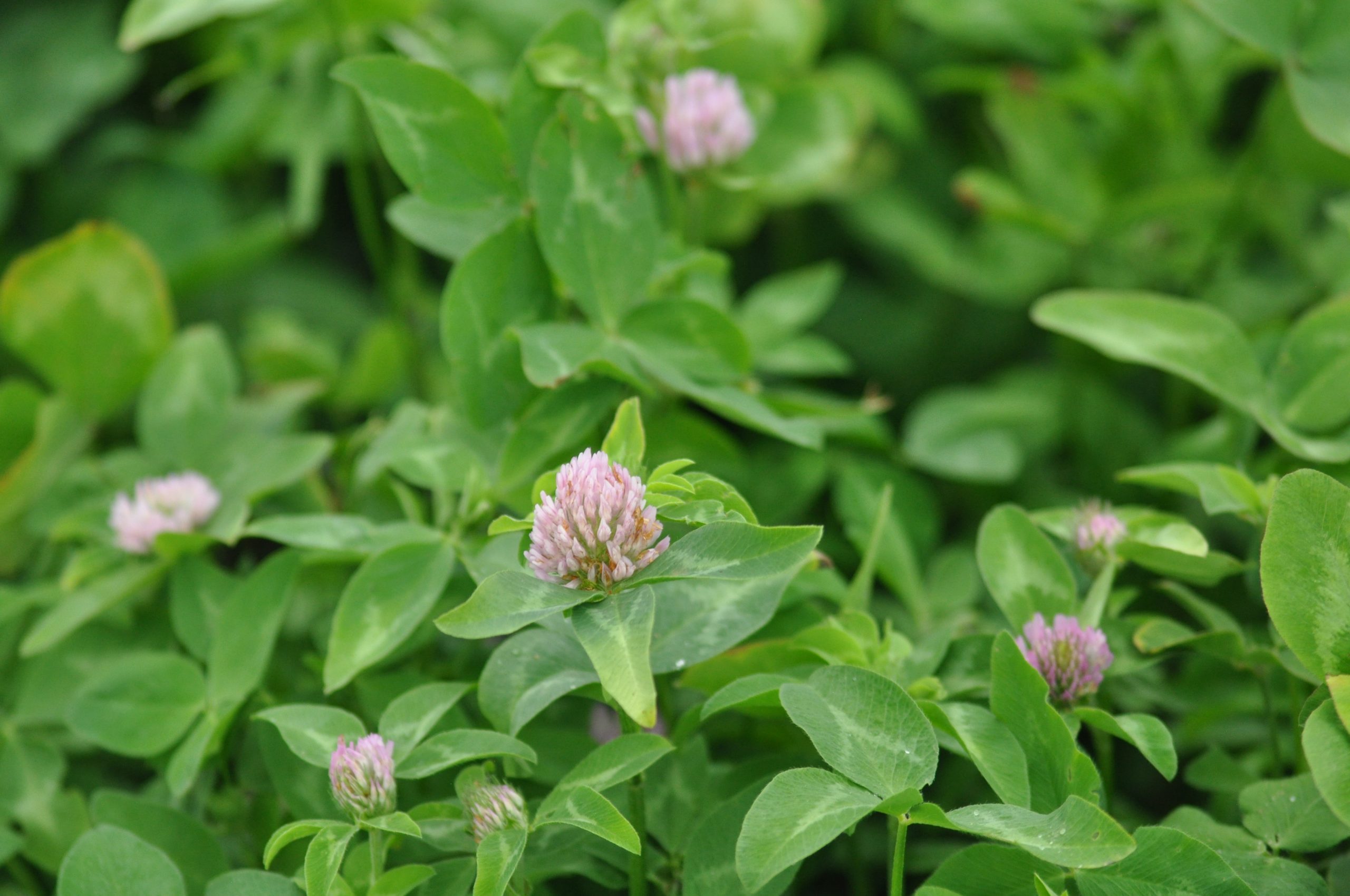Red clover is one of the fastest establishing legumes and can even be grown on more acid soils. It has hollow, hairy stems and branches. The main draw back is limited persistence and winter-hardiness, as well as difficulty with drying. Not an improved variety and is best for short use. Approximately 1-2 years.
Common Medium Red Clover is faster establishing than alfalfa and better adapted to wetter and lower pH soils. Red clover can sometimes be seen as a good alternative to alfalfa in heavier soils and a forage that does not lose quality as quickly with maturity. It does have less tolerance to drought, and lower persistence, however. Winter hardiness is generally lower as well, and with its hairy stems, it does not dry as well (improved varieties with reduced stem hair are preferred for dry hay).
Red clover’s thick taproot can reach a length of 24 to 26 inches, with its many lateral offshoots mainly concentrated in the upper 5 inches of soil.
Establishment is flexible. It can be seeded in early spring or late summer, or frost seeded into a thinning stand in late winter when the ground is frozen and bare soil is exposed.
With a spring seeding, red clover can be cut 3 times during the establishment year if there are favorable conditions (including fertility, moisture, etc.). Although a more aggressive cutting schedule than typically recommended, Penn State has observed greater forage and nutritional yield, with no negative effects in the year following establishment.
Common Medium Red Clover Tech Sheet
Management of Red Clover as a Cover Crop (Penn State Extension)
Nitrogen Credits from Red Clover as a Cover Crop Between Small Grains and Corn (Cornell Extension)

